Asia Travel Pulse
Singapore Experiences The Steepest Drop In US Travel Interest Across Southeast Asia While Vietnam And Philippines Show Strong Growth In American Tourism Demand
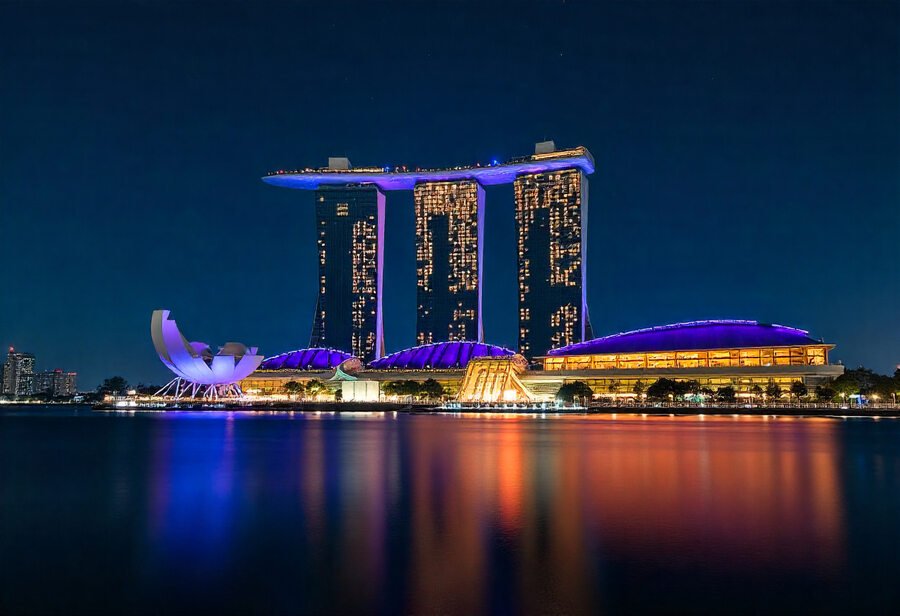
Published on
August 7, 2025 |
By: TTW News Desk
Singapore has recorded the sharpest decline in travel interest from U.S. tourists across Southeast Asia, signaling a significant shift in American tourism patterns in the region. According to newly released travel trend data, factors such as rising costs, stricter regulations, and a perceived lack of novelty have contributed to the drop in U.S. demand for Singapore as a destination. In contrast, Vietnam and the Philippines are witnessing a surge in American travel interest, driven by their affordability, emerging beach destinations, rich cultural experiences, and relaxed visa policies. This evolving landscape highlights a growing preference among U.S. travelers for more immersive, budget-friendly, and off-the-beaten-path experiences in Asia.
Singaporeans are showing a sharp decline in interest toward traveling to the United States in 2025, signaling a significant shift in travel preferences across Southeast Asia. According to fresh findings from Milieu Insight’s “Asian Travel Demand for US” survey, carried out between late May and mid-June, only 7% of respondents in Singapore said they had increased interest in visiting the U.S. this year. In contrast, 55% said their interest had declined—marking the steepest drop among all Southeast Asian countries included in the study.
Across Southeast Asia, interest in traveling to the United States remains fairly steady, with 44% of respondents still eager to make the trip and just 18% reporting a decline in interest. However, Singapore sets itself apart with a much steeper drop. The data highlights a clear and growing hesitation among Singaporean travelers, who are increasingly choosing to leave the U.S. off their upcoming itineraries.
Safety Expectations Shape Travel Decisions
One of the leading factors behind this decline is personal safety. Singaporeans, who live in a country consistently ranked among the safest in the world, hold extremely high expectations when it comes to security while abroad. The United States, by contrast, continues to struggle with high-profile issues like mass shootings, violent crime, and unrest—creating a stark contrast that has made many Singaporeans rethink their travel plans.
Singapore’s internal safety standards play a major role in shaping outbound travel choices. With crime rates kept extremely low at home, travelers from the city-state are more likely to avoid destinations where public safety feels uncertain. In this context, the United States now faces growing scrutiny from Southeast Asia’s most security-conscious travelers.
Concerns Mount Over U.S. Firearm Policies and Border Control Issues
Concerns over gun laws are triggering serious unease among travelers. Frequent headlines about gun-related incidents and the lack of consistent firearm regulations across various U.S. states have heightened anxiety. For many in Singapore, the idea of traveling to a country where firearms are widely accessible—but public safety measures seem unreliable—feels increasingly unsettling.
Beyond gun-related concerns, U.S. immigration processes are also discouraging potential visitors. Even though Singaporeans enjoy one of the world’s most powerful passports—with visa-free or visa-on-arrival access to 193 countries and territories—many remain wary of entering the United States. According to the survey, only 60% of Singaporeans feel confident that their U.S. immigration experience would go smoothly. This figure sits far below the regional average of 78%, revealing that Singaporeans are more skeptical about how they will be received at American borders.
Past reports of extended questioning, profiling, and random checks have likely influenced these sentiments. Even travelers with clear documentation and valid travel reasons now hesitate, unsure of how they might be treated at customs or immigration checkpoints.
Discrimination and Policy Concerns Deepen Reluctance
Several other factors add to the apprehension. Singaporeans cite fears of racial discrimination, mistreatment based on appearance or background, and discomfort with current U.S. policy directions. Concerns include everything from rising hate crimes against Asians to systemic challenges in how foreigners are treated upon arrival.
The perception of the United States as a destination where foreign travelers may face hostility—whether from law enforcement, other travelers, or institutions—continues to grow. While many of these issues may be debated or interpreted differently across media sources, the end result remains clear: a growing number of Singaporeans no longer feel safe or welcome in the United States.
Cost and Visa Rules Less of a Barrier for Singaporeans
Interestingly, the usual obstacles of international travel—high costs and visa requirements—are not the primary issues for Singaporeans. As the holders of the most globally mobile passport and residents of a high-income nation, Singaporeans rarely face financial or administrative hurdles when planning long-haul trips. Their reasons for avoiding the U.S. are rooted more deeply in perceived safety risks and the possibility of negative experiences.
Unlike travelers from less economically secure countries who might weigh the price of travel more heavily, Singaporeans focus on the experience itself. They want travel to feel safe, welcoming, and enriching—and current sentiment suggests that the United States no longer meets those criteria for a significant number of them.
Divergent Regional Trends Highlight Contrast
Meanwhile, several other Southeast Asian countries are showing the opposite trend, with growing interest in traveling to the United States. According to the survey, 57% of respondents from Vietnam and 49% from the Philippines said their desire to visit the U.S. has increased compared to six months ago. Experts believe this rising interest may be influenced by the presence of large Vietnamese and Filipino communities already living in the U.S., which continue to strengthen personal, cultural, and family connections across borders.
This divergence highlights the unique outlook of Singaporeans, whose travel motivations and media consumption habits differ significantly from neighboring nations. Whereas citizens in many Southeast Asian countries rely primarily on social media for news—often filtered through influencers, memes, or viral headlines—Singaporeans still lean heavily on traditional news outlets, both domestic and international. This could shape a more cautionary and fact-driven view of world events, including travel risks.
Singapore has seen the sharpest drop in U.S. travel interest due to rising costs and stricter entry norms, while Vietnam and the Philippines are gaining momentum with affordable prices, relaxed visas, and growing appeal among American tourists seeking authentic, budget-friendly experiences.
The steep drop in Singaporean interest in U.S. travel underscores a deeper shift in how safety, immigration, and international relations now factor into travel decisions. While Americans once welcomed a steady stream of affluent, well-traveled visitors from Singapore, that flow is now slowing down, not because of economic reasons, but because of discomfort with what travelers may face once they land.
As global travel continues to rebound after pandemic disruptions, countries like the U.S. may need to do more than promote attractions and experiences—they must also rebuild trust and assure international travelers that they will be safe, respected, and treated fairly from the moment they arrive.
Asia Travel Pulse
Discover Thailand’s Best Kept Secrets: How Bangkok and Beyond Are Leading the Way for 2025
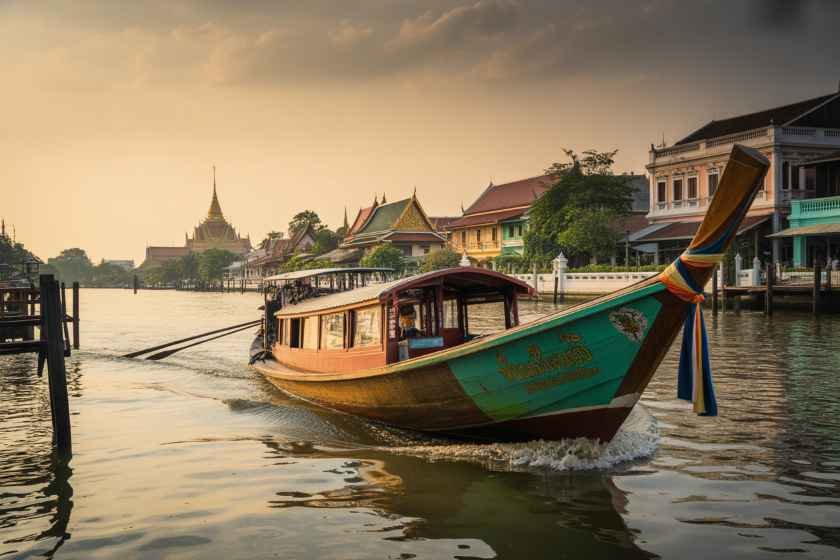
Published on
August 10, 2025 |
Bangkok has once again reaffirmed its position as a premier global tourist hub, garnering the title of Asia’s most visited city for 2025 according to Agoda, a prominent international travel platform. This accolade highlights the metropolis’s lively energy, deep cultural heritage, and expanding allure for international visitors. Notably, the capital’s success is mirrored by other Thai destinations—including Phuket, Pattaya, Chiang Mai, and Hat Yai—which ranked among the region’s most favoured cities for return travel, thereby underscoring the country’s wide-ranging and lasting appeal to diverse tourist segments.
Building on this success, the Tourism Authority of Thailand (TAT) and the Ministry of Tourism and Sports have introduced the “Amazing Thailand Grand Sale 2025,” a nationwide campaign running from July 1 to August 15. Designed to stimulate foreign expenditure, the initiative features discounts and special offers across shopping, accommodation, dining, and entertainment sectors. The campaign is strategically aligned with Thailand’s overarching tourism objectives, further enhancing its status as a premier destination for global travellers.
Bangkok’s sustained appeal to tourists arises from a synergistic blend of cultural, culinary, and logistical advantages each bolstering the others. The ostentatious Grand Palace, the serenity of Wat Arun, and the reverent Temple of the Emerald Buddha remain indispensable for visitors attuned to the city’s rich and intricate heritage. Meandering the Chao Phraya River or bargaining at a floating market transports participants to the waterborne lifestyle that has sustained Bangkok for centuries, bridging contemporary and enduring modes of commerce and culture.
Culinary encounters amplify the destination’s draw. Street vendors across the city serve vivid, audacious flavors—whether the sour-spicy vibrancy of Som Tum or the deeply savory allure of Tom Yum Goong—at prices that defy inflation. Complementing these experiences, districts such as Siam Square, Chinatown, and the sprawling Chatuchak Market merge the contemporary and the antique, allowing seekers of both high-end brands and local crafts to indulge without geographical or economic constraints.
Efficient mobility networks further reassure visitors. The elevated BTS and the subterranean MRT weave through the urban landscape, while metered taxis and river ferries furnish supplementary arteries. At the outset and conclusion of the journey, Suvarnabhumi Airport serves as not only Thailand’s primary gateway but a crossroads for Southeast Asia, simplifying multi-stop itineraries for the increasingly sophisticated and time-sensitive traveler. Together, these elements recur as touchstones for both return visitors and first-time explorers, ensuring that Bangkok’s place on the global tourist map remains secure.
Tourism Safety and Global Appeal
Bangkok was assigned a Level 1 designation (“Exercise Normal Precautions”) in the 2025 Travel Advisory issued by the U.S. Department of State, affirming the city’s alignment with the highest safety standard for outbound U.S. travelers. The rating signifies the Thai government’s sustained commitment to safeguarding the well-being of international guests while promoting a stable and secure environment for tourism-related activities.
Comprehensive safety protocols and continual enhancements to the tourism infrastructure reinforce Thailand’s attractiveness for visitors seeking both leisure and adventure. The country’s spectrum of experiences—from the secluded beaches of Phuket to the culturally rich centre of Chiang Mai—contributes to its enduring appeal and secures its position as a leading global destination.
The “Amazing Thailand Grand Sale 2025” Campaign
To build on the upward momentum in tourist arrivals, the Tourism Authority of Thailand (TAT) in collaboration with the Ministry of Tourism and Sports inaugurated the “Amazing Thailand Grand Sale 2025.” Held annually from July 1 to August 15, the initiative offers substantial savings across an extensive range of goods and services nationwide, specifically aimed at enticing international travelers to immerse themselves in the breadth of Thailand’s retail, culinary, and leisure experiences.
The current promotional campaign offers price reductions on shopping, hotel stays, attraction entry, and dining, aiming to entice travelers to sample the finest of Thailand. Discounts are available for luxury boutiques in Bangkok’s premier malls, reduced rates for suites in Phuket’s flagship hotels, and special packages featuring exclusive shows and dining in the Pattaya entertainment precinct.
The Tourism Authority of Thailand has invited small and medium enterprises nationwide to join the initiative, thereby rebranding the country as both a value-driven and experience-rich destination in the eyes of international visitors.
Regional Expansion and the Long-Term Tourism Agenda
As Thailand replenishes its travel portfolio, the next stage of growth emphasizes cities beyond the capital. Phuket’s coastal playground remains a marquee attraction, while Pattaya hawks its after-dark economy. Farther north, Chiang Mai combines sacred temples, forest retreats, and holistic health programs.
Meanwhile, rising traveler numbers to secondary destinations such as Hat Yai signal a matured market eager for in-depth discovery. These travelers deliberately seek neighborhoods removed from travel brochures, insisting on spontaneous street-food encounters and dialogue with local artisans. By directing traffic to these lower-profile sites, the strategy, in synergy with the Bio-Circular-Green economy, aspires to balance visitor intake and environmental integrity while dispersing revenue to grass-roots livelihoods.
Tourism’s Upsurge and Economic Transformation
The wave of international arrivals and tailored initiatives such as the “Amazing Thailand Grand Sale 2025 are poised to propel Thailand’s economy to new heights. By 2025, forecasted tourism expenditure could reach several billion dollars, reinforcing the nation’s stature as a must-visit Asian hub. The industry doubtless boosts the national GDP, marshaling employment opportunities and invigorating local supply chains, whether in lodging, handicrafts, or street-food microenterprises.
A concurrent expansion of transportation, terminal, and lodging capacity positions Thailand to rival the shifting preferences of a global traveller. Dedicated funding for ecological, heritage, and wellness itineraries further crafts a multi-dimensional, responsible image, broadening the sector’s resilience and appeal.
Conclusion : Final Assessment
Bangkok, the continent’s most frequented capital, remains the engine of Thailand’s tourism expansion and affirmation of its rising global profile. The “Amazing Thailand Grand Sale 2025,” together with the Tourism Authority’s deliberate marketing, are certain to sustain upward visitor momentum, translating to sustained economic dividends and fortifying the perception of Thailand as a welcoming, cost-effective, and richly layered destination.
Asia Travel Pulse
Southeast Asia’s Vietnam, Thailand and Malaysia Expands Direct Flight Routes to Africa: Here’s What You Need To Know
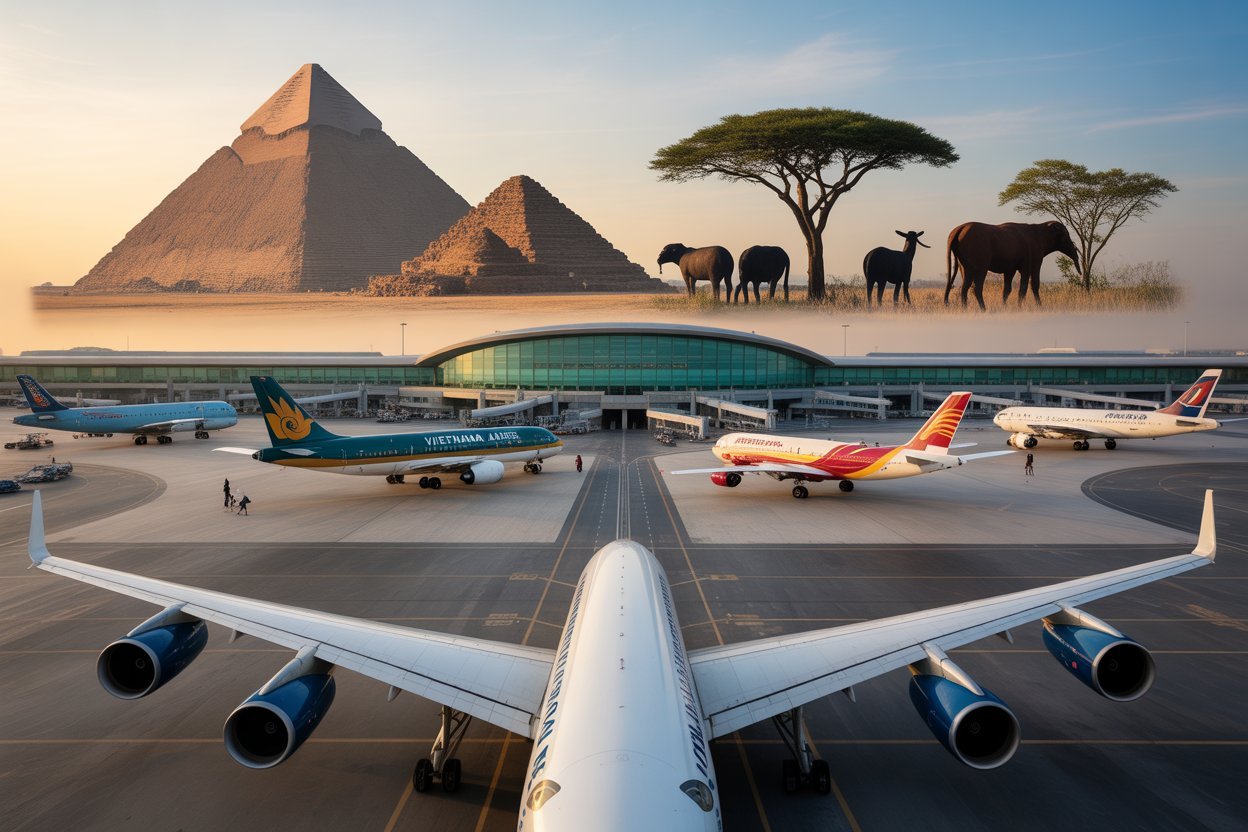
Published on
August 10, 2025 |
The aviation market in Southeast Asia is seeing a significant shift as direct flight routes to Africa is reshaping the tourism landscape. Countries like Vietnam, Malaysia, and Thailand are seeing more direct flight connections to Africa, making it easier for travelers to explore new, exciting destinations across the African continent. This increased capacity, a part of the region’s broader international growth, is opening new doors for travelers eager to explore some of the world’s most unique and off-the-beaten-path destinations.
The expansion of air capacity to Africa has risen by more than 20%, which has attracted more Southeast Asian travelers to Africa for leisure and sightseeing. The culture, landscapes, and history abound, offering a wealth of experiences. The promise of tourism growth in Africa is remarkable, and with the expansion of air routes, more inbound and outbound tourism will be facilitated. Improved air travel alignment is crucial in a post-pandemic context when travelers are looking for novel, adventurous, and culturally rich experiences.
The Growing Air Connectivity between Southeast Asia and Africa
Increased International Routes
Southeast Asia’s aviation sector has long been a dominant player in regional travel, with key airports such as Singapore Changi, Bangkok Suvarnabhumi, and Kuala Lumpur International at the forefront. In August 2025, international flight capacity from Southeast Asia to Africa saw a growth of over 20%, marking a sharp rise in interest in the continent.
This development fits into the overarching pattern where both budget and full-service airlines are trying to provide access to South Africa, Kenya, and Egypt. The increasing number of available routes is, of course, indicative of the expanded interest in cultural exchange, trade relations, and the rapidly growing interest in eco-tourism and adventure tourism.
New Direct Flight Routes
Vietnam Airlines and Malaysia Airlines are expanding their services to South Africa and Kenya in the last quarter of 2025. The Thailand to Egypt route has performed remarkably well, and Bangkok has direct flights to Cairo. Such progress is likely to enhance travel access to Africa for Southeast Asian travelers.
What Does This Mean for Travelers?
For many travelers in Southeast Asia, Africa has long been considered a distant and challenging destination. However, with airlines offering more direct routes, visiting African nations has become significantly easier. For example, the flight time between Singapore and Cape Town has been reduced by several hours, allowing travelers to explore South Africa’s iconic landscapes, from the towering Table Mountain to the pristine beaches along the Indian Ocean coast.
The Rising Popularity of African Tourism Among Southeast Asians
Exploring Unique African Destinations
The rising air travel connectivity is accentuating the growth in Southeast Asia’s interest in African nations, with ease of access to safaris, beach vacations, and cultural tours. Kenya is emerging as a hotspot for wildlife lovers, offering premier safaris in the Maasai Mara. South Africa is witnessing a robust inflow of Southeast Asian travelers as well, particularly those eager to explore the region’s vibrant urban centers and breathtaking landscapes.
Beyond the Safari
Africa is not just about safaris; it also holds deep cultural and historical allure. Countries like Egypt, with its iconic pyramids and ancient monuments, attract history buffs and cultural tourists. The booming art scene in cities like Cape Town and Nairobi also piques the interest of Southeast Asian travelers looking for an immersive cultural experience.
The Impact on Southeast Asian Travelers
With the expansion of flight routes into Africa, the continent is gaining attention for its diverse offerings which transcend beyond the conventional tourist hotspots. In response, travel agencies are developing novel specially tailored packages that incorporate adventure, culture, beach relaxation, and even specially designed tours, enabling travelers to experience Africa more fully.
Economic Benefits for Both Southeast Asia and Africa
Boosting Local Economies
The growing flight capacity to Africa also offers significant economic benefits for both regions. Tourism in Africa, one of the continent’s fastest-growing sectors, will be significantly bolstered by increased access to Southeast Asian travelers. The tourism boom will not only benefit the airline industry but also local economies, as more tourists flock to African cities and landmarks, creating job opportunities in hospitality, tour services, and local retail businesses.
Connecting Cultures
The growing flight connectivity between Southeast Asia and Africa is cultivating cultural relations between the two regions. Southeast Asian tourists are traveling to Africa where they spend their money and unfold their cultures. Also, Southeast Asian countries are displaying more and more African cultures, thereby increasing the awareness of African heritage, cuisine, and arts.
What’s Next for Southeast Asia and Africa?
Opportunities for Further Growth
The future looks bright for both regions as they continue to build on this aviation growth. With increasing flight routes and air capacity, more Southeast Asian countries will gain access to African markets, opening up vast opportunities for collaboration in tourism, business, and trade. As African destinations become more accessible, more people will be able to experience their beauty and diversity.
Airlines are expected to continue expanding their offerings, and with further advances in aviation technology, we can expect even shorter flight times and better travel options. Whether it’s through safari tours, beach getaways, or cultural exploration, the growing air capacity from Southeast Asia to Africa will continue to shape the future of travel in both regions.
Conclusion
The surge in air capacity between Southeast Asia and Africa is transforming the tourism landscape, offering exciting new possibilities for travelers and industries alike. With increased flight routes, more Southeast Asians are discovering the wonders of Africa, from its awe-inspiring wildlife and ancient monuments to its vibrant cultures. As the aviation industry continues to evolve, these connections will pave the way for even greater travel opportunities, fostering cultural exchange and economic growth for both regions.
Asia Travel Pulse
Travel Trade Maldives 2025 Unites Global Tourism Leaders for Business Growth in Asia’s Luxury Island Hub
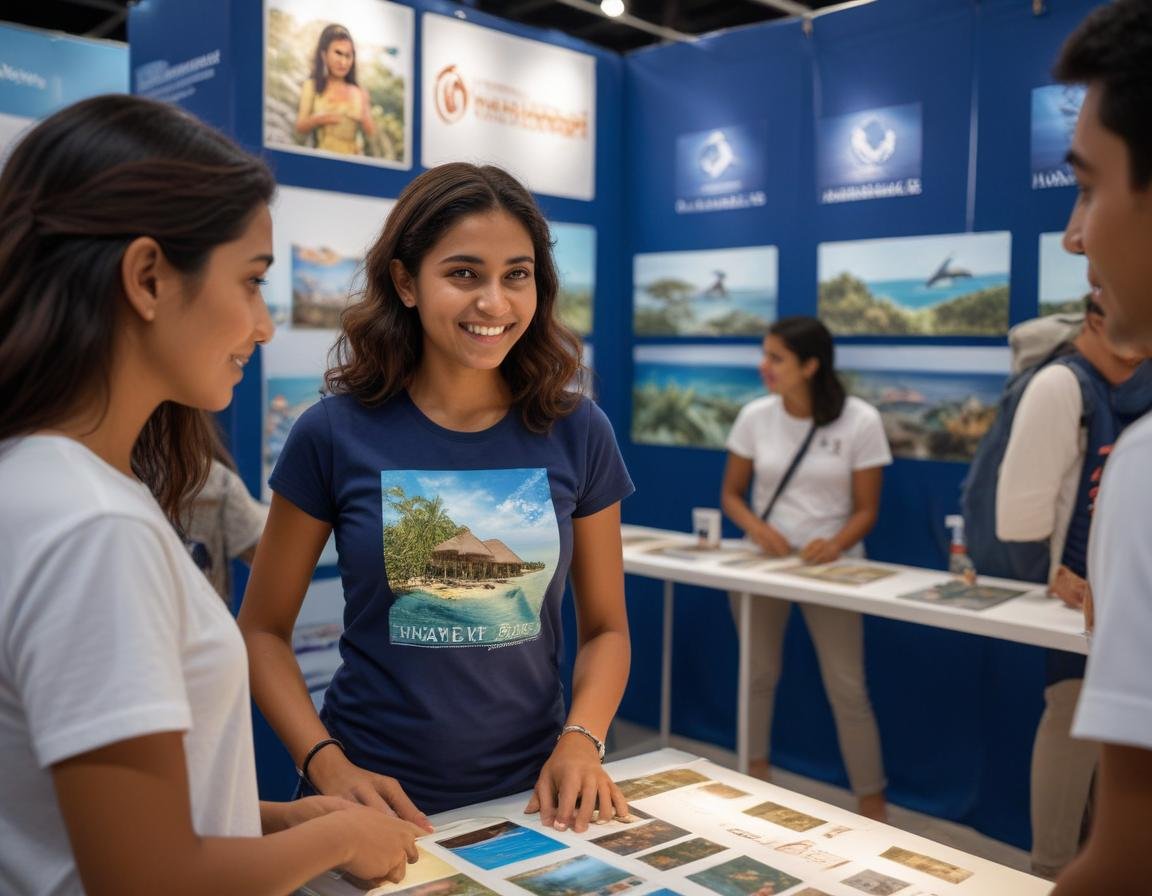
Published on
August 10, 2025 |
By: Tuhin Sarkar
Travel Trade Maldives (TTM) 2025 will take place on 27 and 28 August in the Maldives. This flagship tourism event will connect international buyers, travel trade professionals, and Maldives-based hospitality suppliers. It will focus on building partnerships, signing deals, and showcasing the Maldives as a world-class luxury destination. The event blends high-level business meetings, industry insights, and hands-on experiences in the heart of the Indian Ocean.
Maldives as the Premier Backdrop for Global Travel Trade
The Maldives offers a unique setting for a high-calibre tourism event. Known for its crystal-clear waters, luxury resorts, and personalised service, it is a destination that embodies travel excellence. Hosting TTM here allows international buyers to see first-hand the exceptional standards and diverse offerings of the Maldives tourism industry. This real-world immersion will help drive bookings and long-term partnerships.
Connecting Buyers and Suppliers for Strategic Growth
TTM 2025 is built around pre-scheduled one-to-one meetings. Each buyer will meet with carefully selected suppliers, including resorts, hotels, liveaboards, and destination management companies. This targeted matchmaking ensures that discussions are relevant, focused, and lead directly to business opportunities. Many deals signed at TTM are implemented quickly, making it one of the most efficient trade events in the region.
Showcasing the Maldives’ Luxury and Niche Tourism
The Maldives is synonymous with luxury travel, but TTM 2025 will also highlight niche segments such as diving expeditions, wellness retreats, and sustainable tourism packages. Exhibitors will present tailored experiences designed for high-spending markets, corporate groups, and exclusive incentive travel programmes. This diversity allows buyers to offer clients a wide range of premium experiences beyond the traditional beach holiday.
Sustainability at the Core of Tourism Development
Sustainability will be a central theme of TTM 2025. The Maldives, highly sensitive to climate change, is taking proactive steps to promote eco-conscious tourism. Resorts will showcase green initiatives such as solar energy adoption, coral reef restoration projects, and zero-plastic operations. Buyers will learn how these sustainable practices can enhance a destination’s appeal to environmentally aware travellers.
Industry Insights Through Knowledge Sessions
TTM will offer more than just networking. The event will feature panel discussions and seminars led by industry leaders, economists, and marketing experts. Topics will include luxury tourism trends, regional air connectivity, and strategies for attracting emerging travel markets. These sessions will give delegates practical insights and data-driven strategies to help them navigate a competitive tourism landscape.
Experiencing the Maldives First-Hand
Beyond meetings, TTM will arrange curated familiarisation trips for buyers. These site visits will include stays at luxury resorts, exploration of inhabited islands, and marine activities such as snorkelling and diving. By experiencing the product first-hand, buyers can market it more effectively to their clients. This blend of business and experiential learning makes TTM an impactful trade event.
Driving Maldives’ Position as a Global Tourism Leader
The Maldives has consistently ranked as one of the most desirable luxury destinations in the world. Events like TTM strengthen this position by directly connecting the country’s suppliers with international travel markets. By fostering these connections, the Maldives can maintain its competitive edge, diversify its offerings, and attract new visitor segments.
Economic Impact and Long-Term Benefits
The deals generated at TTM have a measurable economic impact on the Maldives tourism industry. Resorts and operators benefit from increased bookings, while local communities gain from expanded employment and supply chain opportunities. The event also boosts the Maldives’ visibility in global tourism media, ensuring it remains top-of-mind for high-value travellers.
Travel Trade Maldives 2025 Set to Deliver High ROI
Travel Trade Maldives 2025 promises to be more than just a marketplace—it is a catalyst for tourism growth. By combining targeted business meetings, sustainability initiatives, cultural immersion, and luxury experiences, the event offers exceptional value to participants. As delegates leave the Maldives, they will carry with them not only new business deals but also a renewed appreciation for the country’s unmatched beauty and hospitality.
-

 Brand Stories3 weeks ago
Brand Stories3 weeks agoBloom Hotels: A Modern Vision of Hospitality Redefining Travel
-

 Brand Stories2 weeks ago
Brand Stories2 weeks agoCheQin.ai sets a new standard for hotel booking with its AI capabilities: empowering travellers to bargain, choose the best, and book with clarity.
-

 Destinations & Things To Do3 weeks ago
Destinations & Things To Do3 weeks agoUntouched Destinations: Stunning Hidden Gems You Must Visit
-

 Destinations & Things To Do2 weeks ago
Destinations & Things To Do2 weeks agoThis Hidden Beach in India Glows at Night-But Only in One Secret Season
-

 AI in Travel3 weeks ago
AI in Travel3 weeks agoAI Travel Revolution: Must-Have Guide to the Best Experience
-

 Brand Stories1 month ago
Brand Stories1 month agoVoice AI Startup ElevenLabs Plans to Add Hubs Around the World
-

 Brand Stories4 weeks ago
Brand Stories4 weeks agoHow Elon Musk’s rogue Grok chatbot became a cautionary AI tale
-

 Brand Stories2 weeks ago
Brand Stories2 weeks agoContactless Hospitality: Why Remote Management Technology Is Key to Seamless Guest Experiences
-

 Asia Travel Pulse1 month ago
Asia Travel Pulse1 month agoLooking For Adventure In Asia? Here Are 7 Epic Destinations You Need To Experience At Least Once – Zee News
-

 AI in Travel1 month ago
AI in Travel1 month ago‘Will AI take my job?’ A trip to a Beijing fortune-telling bar to see what lies ahead | China



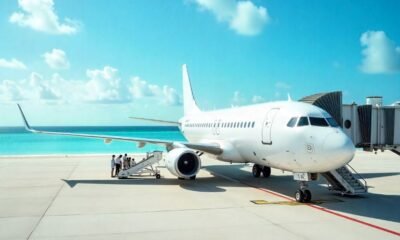









You must be logged in to post a comment Login